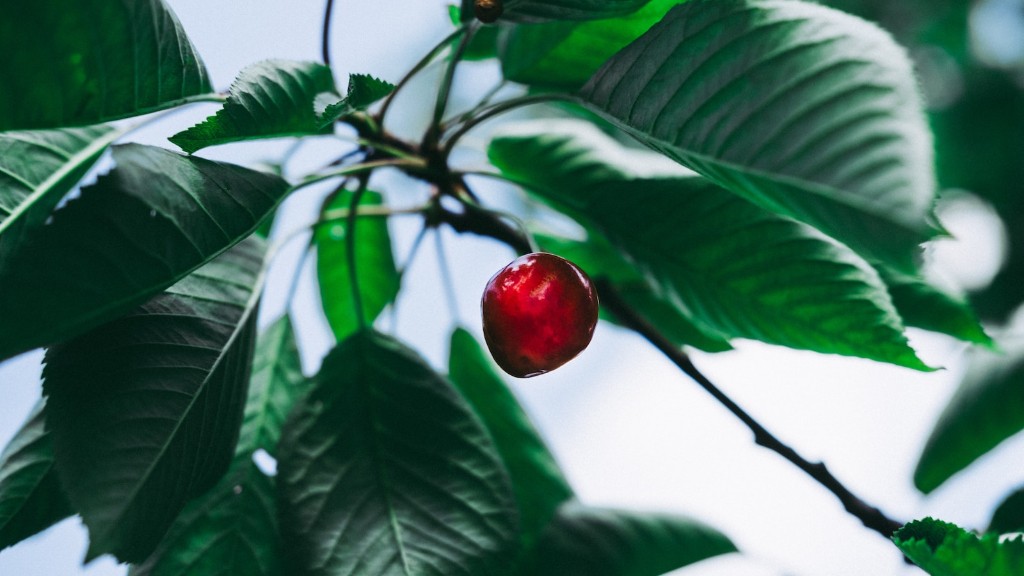What is Cherry Production?
Cherry production is the process of growing and harvesting cherries. It is the lifeblood of orchards around the world, as they rely on this process to provide a steady supply of cherries. The process of growing cherries is a tricky one, and requires precision. To ensure a successful harvest, farmers must maintain a balance between sun, soil, and water, as well as controlling pest and fungal problems. In addition to this, the harvesting of cherries requires the use of specialized harvesting methods to ensure the best outcome for both the farmers and consumers.
How Many Cherries Does a Tree Produce?
The number of cherries a tree can produce will depend on the type of cherry, the tree’s health, and the environment it is grown in. Generally, a healthy cherry tree can produce up to 200lbs of cherries each year. On average, one cherry tree will produce between 30 and 50lbs of cherries per year. Some varieties, such as sweet cherries, may produce up to 75lbs of cherries per year. For smaller varieties, such as tart cherries, the average production is around 10-20lbs per tree.
Factors That Influence Cherry Production
There are many factors that influence cherry production, including the type of cherry, the climate and environment the tree is grown in, and the age of the tree. The amount of sunshine the tree receives will also affect cherry production. Trees require a certain number of hours of sunshine per day in order for their fruit to mature and reach its full potential. The soil type and fertility can also determine cherry production, as poor soil drainage and poor soil fertility will limit the tree’s ability to produce cherries.
Important Elements of Cherry Production
In addition to the factors mentioned above, there are some important elements that must be in place in order to ensure a successful cherry harvest. Pruning and thinning are two essential tasks that need to be undertaken annually in order to create an optimal environment for cherry production. Pruning helps to remove dead, damaged or diseased branches, while thinning reduces the number of cherries on the tree and encourages larger fruits to develop.
Pest and Disease Control for Cherry Production
Pest and disease control is also important for cherry production. Common pests that can affect cherry production include aphids, scale, and various caterpillars. Pest control measures should be taken to ensure that cherry trees remain healthy and produce a good crop. Diseases that can affect cherry production include brown rot, fire blight, and powdery mildew. Planting resistant varieties, maintaining proper spacing, and using fungicides and pesticides can help minimize the risk of disease and pest damage.
Harvesting Cherries
Harvesting cherries is a delicate and precise process. To ensure that cherries are harvested at the proper ripeness, farmers must use proper harvesting equipment and techniques. Generally, cherries should be harvested when they are still slightly firm and green, as this will ensure the highest quality. Once harvested, cherries must be handled carefully and brought to market quickly.
Cherry Production Around the World
Cherry production is an important agricultural industry that spans across many countries and regions. In the United States, Washington, Oregon, California, and Michigan are the leading states for cherry production. In Europe, cherries are mostly produced in Spain, Germany, Italy, and Turkey. In Asia, the leading cherry producers are China and Iran. Cherry production is also important in Latin America, with countries such as Chile, Argentina, and Peru leading the way.
Why is Cherry Production Important?
Cherry production is vital to the health of orchard owners and communities around the world. Cherries provide a source of income and employment, as they are an important export in many regions. Cherries also provide a variety of nutrients and antioxidants that benefit human health. In addition, cherries are a great addition to a variety of dishes, including pies, salads, and smoothies. As a result, cherry production is an essential part of many local economies and communities.
Packing and Storage of Cherries
Packing and storing cherries properly is essential in order to prevent spoilage and maintain quality. Cherries must be packed in breathable materials that keep the cherries cool and adequately ventilated. In addition, cherries must be stored at cool temperatures to ensure the highest quality and extend shelf life. When storing cherries, it is important to remember that the temperature should never exceed 85 degrees Fahrenheit.
How to Make Cherries Healthier
Cherries are known for their health-promoting properties, but there are a few simple steps to ensure the best health benefits from cherries. Eating fresh, tart cherries when they are in season can provide more health benefits than canned or frozen cherries. In addition, adding cherries to a healthy, balanced diet can increase the level of antioxidants in the body. Additionally, cherries can be a great addition to desserts and smoothies, adding a sweet and tart flavor.
Marketing Cherries Successfully
Marketing cherries successfully is essential to a successful cherry production. Knowing the target audience and the best methods of promotion can help spread the word about cherries and increase sales. Effective marketing strategies include using social media and influencers to reach potential customers, as well as creating promotional materials to build brand awareness and create interest in cherries. In addition, leveraging the power of the internet to create an online presence can reach an even larger customer base.

